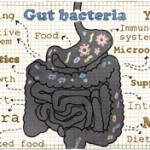The study has recruited 117 RA, 34 PsA and 98 AS patients, along with 54 patients with non-inflammatory joint pain and 134 healthy controls, ranging in age from their 20s–80s. (JIA patients are being recruited for a separate study.) Patients provide blood and clinical information at a lab, then collect stool samples and fill out dietary surveys at home. C-reactive protein (CRP) levels, genetic profiling, fecal isolates, microbes and other data are collected.
So far, the data suggest increased inflammation does not correspond with major overall microbiome changes, “but if we zoom in closer, we see individual, smaller-scale associations between the microbiome and different aspects of arthritis phenotypes,” Dr. Huttenhower said. “This is typical in microbiome research: You have to look closely at individual [microorganisms] and individual phenotypes,” and in RA, microbial patterns are similar to those seen in IBD.
Example: Faecalibacterium prausnitzii, generally a beneficial, anti-inflammatory bug, appears to be depleted in the gut of RA patients at times of increasing inflammation. People without inflammation have higher levels of F. prausnitzii. The reverse is seen with typically bad, proinflammatory microorganisms, such as Ruminococcus gnavus, which result in inflamed patients having higher levels, while healthy controls have lower levels. Researchers have found fewer samples with an absence of R. gnavus in cases with systemic inflammation. However, not all R. gnavus microorganisms are alike.
“When we look at genetic variations in microbes from strain to strain, often there can be large swaths of the genome, with one-quarter to one-third of genes differing between strains of the same microbe. Microbial genetics are far more diverse than human genetics,” he said.
One interesting finding is a distinct subclade of nucleotide variance that defines related strains of R. gnavus enriched in both RA and AS patient populations. The researchers are trying to identify which genes are present or absent in particular R. gnavus strains and explain their role in inflammation. Many microbial genes in the human gut are biochemically uncharacterized.
“Often, we look at these genes and say, ‘Well, there’s a gene, but we don’t know what it does.’ But in subset of disease-associated microbial genes, we can start to hypothesize why they drive systemic inflammation or not,” said Dr. Huttenhower.
Microbes Fight for Iron
The IAMC researchers have also noticed an increase in iron sequestration utilization genes in the altered gut microbiomes of patients with inflammatory arthritis. Various pro-inflammatory microbes, including R. gnavus, seem to compete for iron as a limited resource, possibly to supplement their own growth and outcompete other microbes for the mineral, he said. The researchers also found an increase in microbes, using both local and diet-derived folate independent of methotrexate treatment, in the guts of people with more severe arthritis.



